Ryan Hall's Blog, page 350
September 18, 2015
Meb Aiming for Half Marathon Masters Record at Rock ‘n’ Roll San Jose
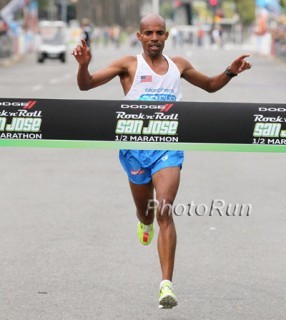
Meb last won Rock 'n' Roll San Jose in 2011. (Photo: PhotoRun.net)
Meb Keflezighi is eyeing more records—and the Rock ‘n’ Roll San Jose Half Marathon will be home for his next attempt.
The 40-year-old Keflezighi is planning to race Rock ‘n’ Roll San Jose on Sept. 27, where he will attempt to break the U.S. masters record for the half marathon. The current mark is 1:03:23, set by Mbarak Hussein at the Philadelphia Distance Run back in 2005.
Keflezighi, just weeks after turning 40, ran a 1:02:29 at Rock ‘n’ Roll San Diego in May, but the net drop of the point-to-point course made his time ineligible for records.
So he will go for it at Rock ‘n’ Roll San Jose instead, and he has a great history there—in addition to winning the race in 2009, 2010 and 2011, his 2009 time of 1:01:00 stands as his personal best for the distance.
“From 2009 to 2011, Meb dominated the Rock ‘n’ Roll San Jose Half Marathon, winning the race he co-founded all three years, and setting an American record at 20K on the way to his 2009 victory,” said Tracy Sundlun, senior vice-president and co-founder of the Rock ‘n’ Roll Marathon Series. “Well, Meb is back! And he wants some more American records, but this time they are masters records as he will be running Rock ‘n’ Roll San Jose for the first time after turning 40 on May 5.
“To say that we as an organization are excited is an understatement. Meb has been doing unprecedented things with his feet for over 20 years, and I can’t wait to see what new chapter of greatness he writes on September 27 on the streets of San Jose!”
Meb has a busy schedule ahead of him. After Rock ‘n’ Roll San Jose, he’s planning to run the New York City Marathon on Nov. 1. A few months after that, he will race in the 2016 U.S. Olympic Trials Marathon in Los Angeles on Feb. 13.
The post Meb Aiming for Half Marathon Masters Record at Rock ‘n’ Roll San Jose appeared first on Competitor.com.
Photos: Vertical Running in Boulder’s Tour de Flatirons
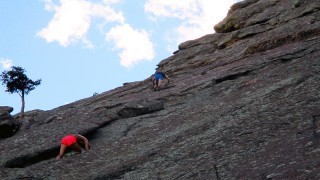
Every fall for the past 12 years, a diverse group of trail runners and rock climbers have gathered at Chautauqua Park in Boulder, Colo., to participate in a ritual called the Tour de Flatirons. Known as Satan’s Minions, this group speeds up the tall sandstone formations that make up Boulder’s famous skyline, blurring the line between running, climbing and scrambling. The group typically meets once a week for several weeks in September and October, but the Tour de Flatirons events are informal, unofficial gatherings (participants don’t call it a race) and definitely not sanctioned events open to the public. Scaling the Flatirons requires trail running or climbing shoes with sticky rubber outsoles and a climbing harness, plus considerable technical prowess and aerobic fitness.
Overall, participants covered 3.7 miles with 2,584 feet of elevation, with 1,850 feet of technical climbing (including a section rated 5.6 on the First Flatiron) and two rappelling sections. The fastest of the “minions,” Matthias Messner, finished the route in 57 minutes, 39 seconds—about 3 minutes ahead of Stefan Griebel (1:00:42) and Ryan Franz (1:00:54). Champion trail runner Anton Krupicka was the fourth finisher (1:03:16) after a bit of a snafu with his rappelling rope.
Check out the amazing photos below to learn more about the rugged nature of the Tour de Flatirons! (And watch this video, too!)
RELATED: How The Mountains Changed The Way I Run
Photo Gallery
1 of {count}
Back to Start
View Larger Image
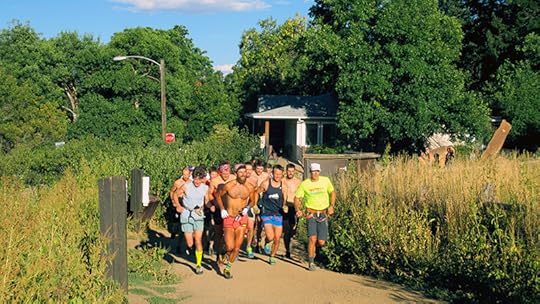
Boulder's Tour de Flatirons
The first 2015 Tour de Flatirons event gets underway in Chautauqua Park with a fast upward half mile to the base of the Second Flatiron. The 2015 Tour de Flatirons started this week by linking up the three most iconic—and largest—of the Flatirons via a route that sent participants up the Freeway route on the Second Flatiron, then down a trail to the base of the First Flatiron, up the Direct East Face of the First Flatiron, and then over a rugged talus route to the East Bench of the Third Flatiron and an ascent up the Standard East Face before finally running back on trails to the finish at Chautauqua Park. Photo: Peter N. Jones
View Larger Image

Boulder's Tour de Flatirons
Matthias Messner was the early leader on the climb up the Second Flatiron. Photo: Eric Lee
View Larger Image
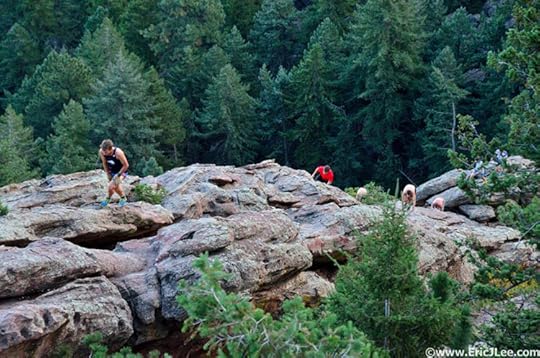
Boulder's Tour de Flatirons
With Messner off the front and Ryan Franz, Stefan Griebel and Anton Krupicka close behind, numerous other minions had started the first climb. Photo: Eric Lee
View Larger Image
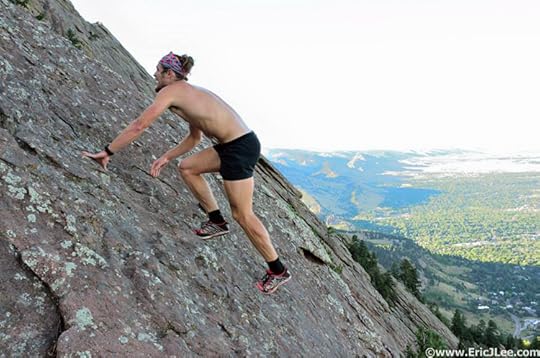
Boulder's Tour de Flatirons
Joe Grant ascended the Second Flatiron as early evening shadows descended on Boulder. Photo: Eric Lee
View Larger Image
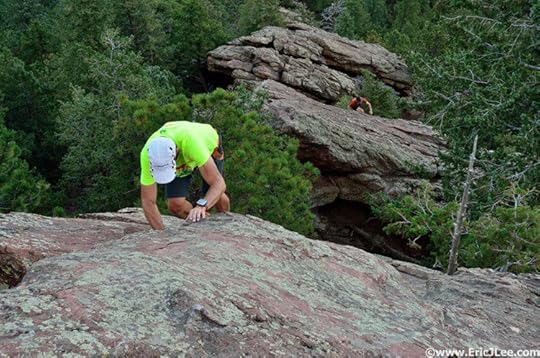
Boulder's Tour de Flatirons
Bill Wright, one of the founders of Satan's Minions, worked his way up an upper section of the Second Flatiron. Photo: Eric Lee
View Larger Image
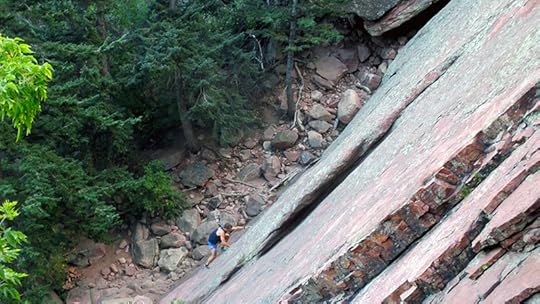
Boulder's Tour de Flatirons
Messner started the climb up the First Flatiron with a narrow lead over Anton Krupicka. Photo: Peter N. Jones
View Larger Image
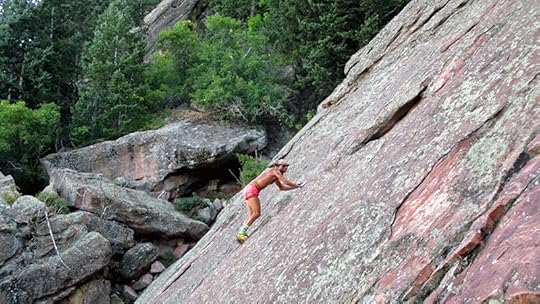
Boulder's Tour de Flatirons
Krupicka was about a minute behind Messner as he started to maneuver his way up the First Flatiron. Photo: Peter N. Jones
View Larger Image
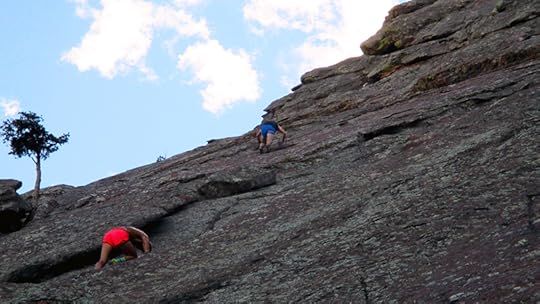
Boulder's Tour de Flatirons
Scrambling up the First Flatiron, Krupicka began to close the gap on Messner. Photo: Peter N. Jones
View Larger Image
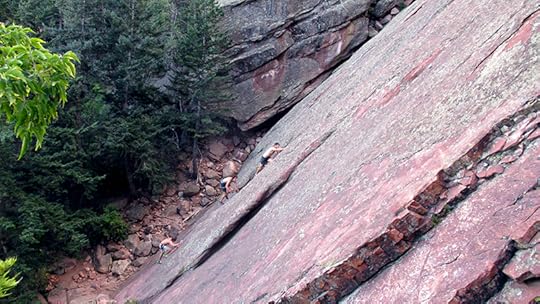
Boulder's Tour de Flatirons
Darren Smith, Cordis Hall and Stefan Griebel were among the next of Satan's Minions to start the climb of the First Flatiron. Photo: Peter N. Jones
View Larger Image
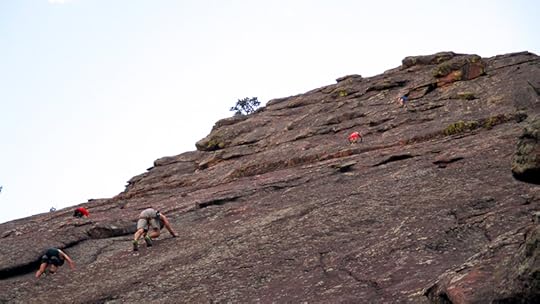
Boulder's Tour de Flatirons
Messner was in the lead with Krupicka close behind 300 feet up the First Flatiron while Franz and Griebel gave chase below. Photo: Peter N. Jones
View Larger Image
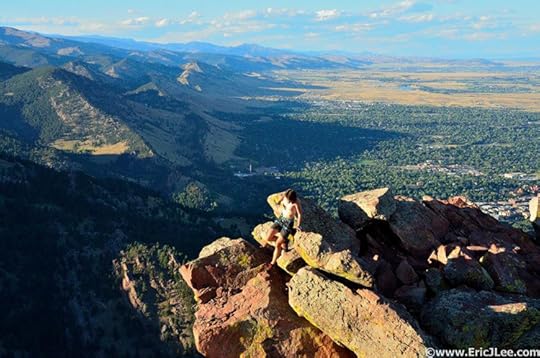
Boulder's Tour de Flatirons
Cordis Hall topped out on the First Flatiron as the sun was starting to set on the western horizon. Photo: Eric Lee
View Larger Image
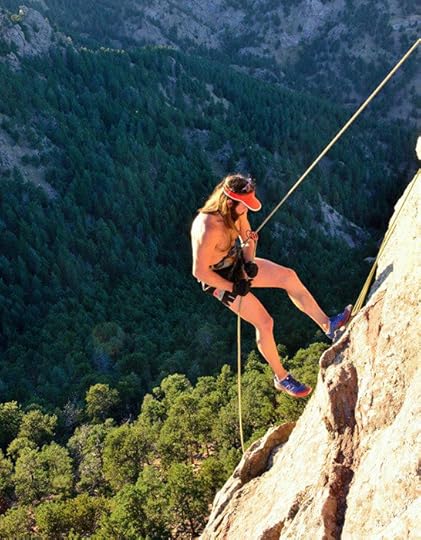
Boulder's Tour de Flatirons
Kendrick Callaway rappels off the First Flatiron. The rappel off the First Flatiron was optional—downclimbing that section was also fair game. Photo: Eric Lee
View Larger Image
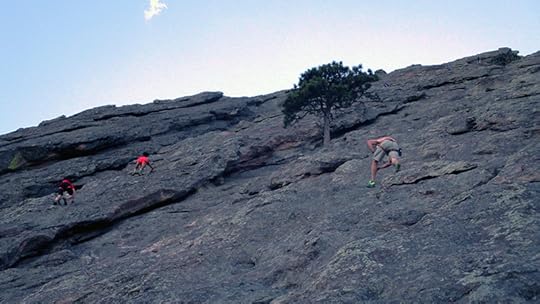
Boulder's Tour de Flatirons
The leading participants were spread out over the final ascent up the Third Flatiron. Photo: Peter N. Jones
View Larger Image
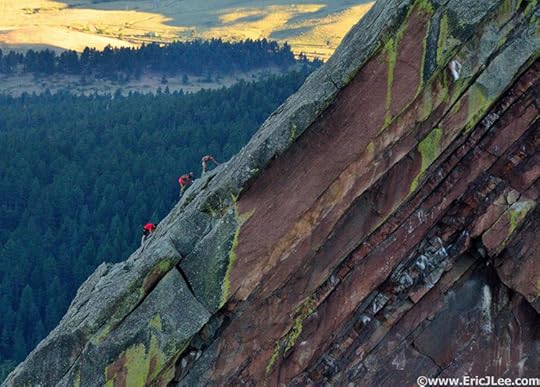
Boulder's Tour de Flatirons
Ryan Franz, Anton Krupicka and Stefan Griebel worked their way up the Third Flatiron in close proximity to each other. Photo: Eric Lee
View Larger Image
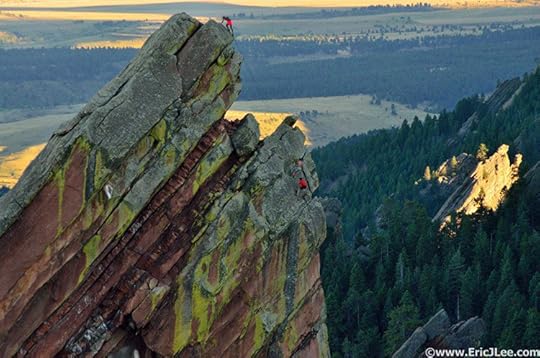
Boulder's Tour de Flatirons
Anton Krupicka (top) prepares to descend off the top of the Third Flatiron, as Ryan Franz and Stefan Griebel work their way down the 190-foot free rappel. Krupicka's line got snagged, so he ended up rappelling to Friday’s Folly, then downclimbing the rest of the Third. Photo: Eric Lee
View Larger Image
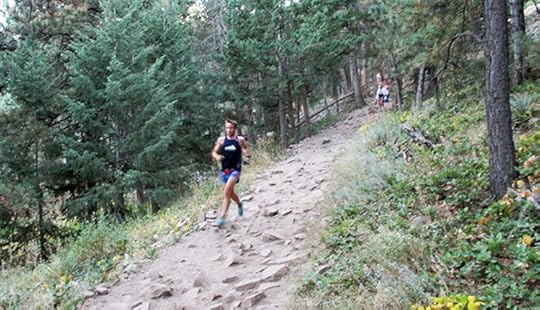
Boulder's Tour de Flatirons
Messner blasted down the final section of trail in the lead. He was the first finisher in 57:39. Photo: Peter N. Jones
View Larger Image
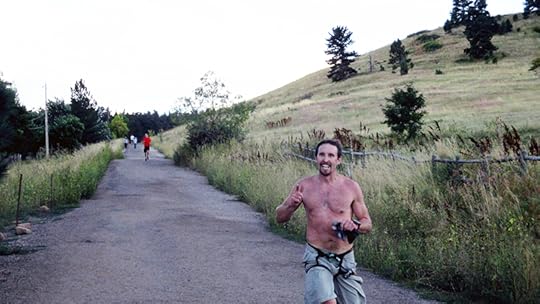
Boulder's Tour de Flatirons
Stefan Griebel closed hard to become the second finisher, about 3 minutes behind Messner and 12 seconds ahead of hard-charging Ryan Franz coming down the path behind him. Photo: Peter N. Jones
View Larger Image
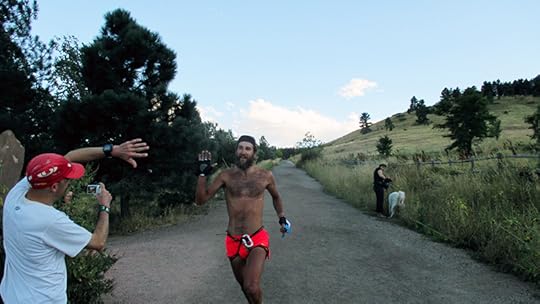
Boulder's Tour de Flatirons
Krupicka was the fourth to finish after 1:03:16 of running, climbing and scrambling. (He was slowed a bit after getting snagged in the tangled rappel ropes off the back of the Third Flatiron.) Photo: Peter N. Jones
View Larger Image
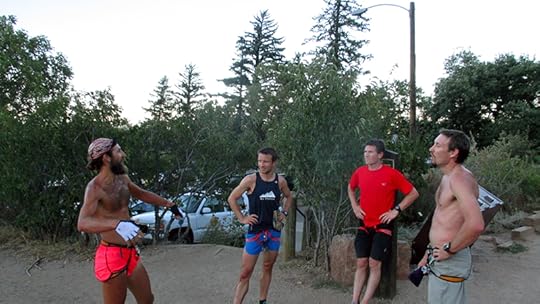
Boulder's Tour de Flatirons
Krupicka swapped stories and shared laughs with the top three finishers—Messner (1st), Ryan Franz (3rd) and Stefan Griebel (2nd). Photo: Peter N. Jones
Related Galleries
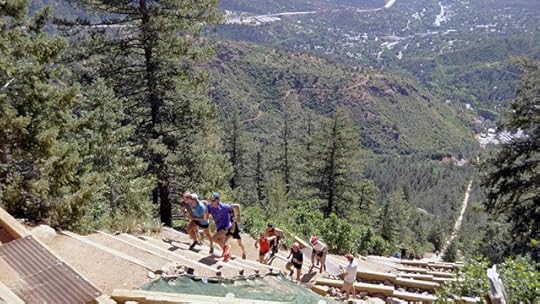
Photos: The Relentlessly Steep Manitou Incline

Photos: Amazing Images from the 2015 Ultra-Trail du Mont-Blanc
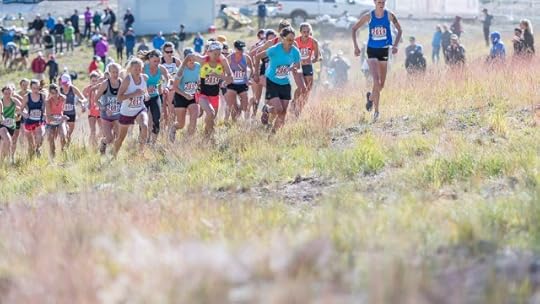
Photos: 2015 U.S. Mountain Running Championships
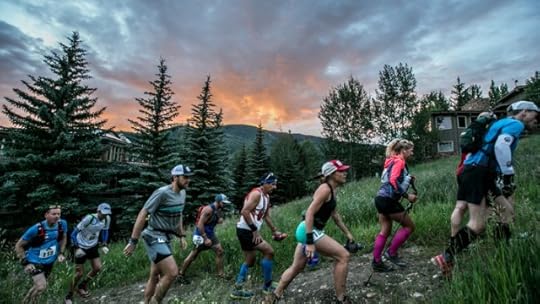
Photos: 2015 Audi Power of Four Trail

More Galleries
The post Photos: Vertical Running in Boulder’s Tour de Flatirons appeared first on Competitor.com.
Video: Recap of The North Face’s Inaugural Night Ray Outdoor Festival
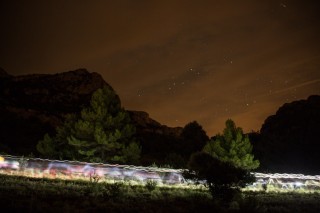
Trail runners navigate the Verdon landscape at night, leaving a blaze of light in their wake. Photo: Vince Perraud
From Sept. 12-13, The North Face hosted their first Night Ray Outdoor Festival in Gorges du Verdon, France. Several hundred adventurers took part in an array of outdoor activities from hiking and trail running through the gorge with sights of the stunningly turquoise-green Verdon River, to dancing the night away among unique light installations set under the stars. The event also consisted of photography, ultra trail running and outdoor nutrition/culinary workshops lead by The North Face-sponsored athletes.
A quick video recap of the festival captures the perfect trail runner’s getaway:
The post Video: Recap of The North Face’s Inaugural Night Ray Outdoor Festival appeared first on Competitor.com.
Photos: Vintage Shots From Rock ‘n’ Roll Montreal
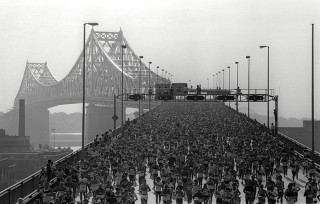
The Rock ‘n’ Roll Montreal Oasis Marathon and 1/2 started way back in 1979 as the Montreal Marathon. After going on hiatus from 1990 to 2003, the race re-emerged in 2004 and this weekend will celebrate its 25th running.
As part of that celebration, let’s take a nostalgic look at some of the earliest Montreal Marathon races, in photos. Most of these photos are from the first five editions of the race, from 1979-83, giving a charming glimpse at the sport of running some 35 years ago.
All photos by Bernard Brault:
Photo Gallery
1 of {count}
Back to Start
View Larger Image
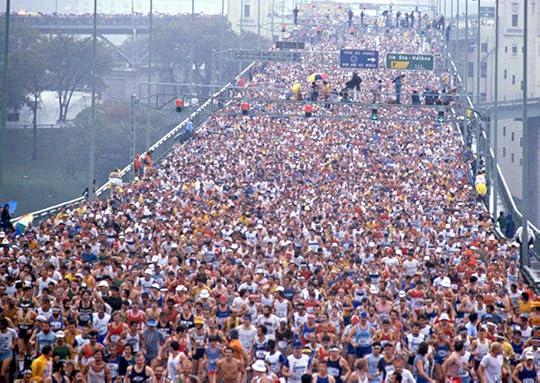
View Larger Image
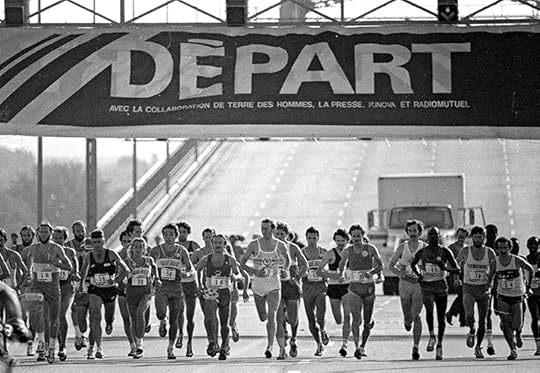
View Larger Image
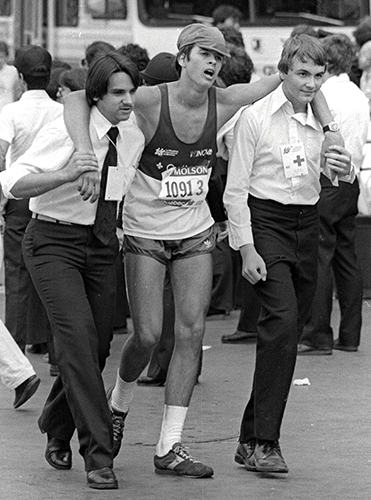
View Larger Image
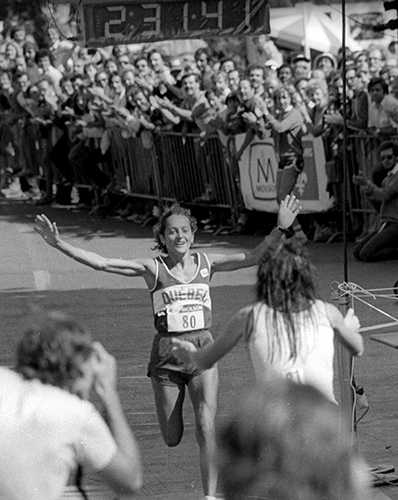
View Larger Image
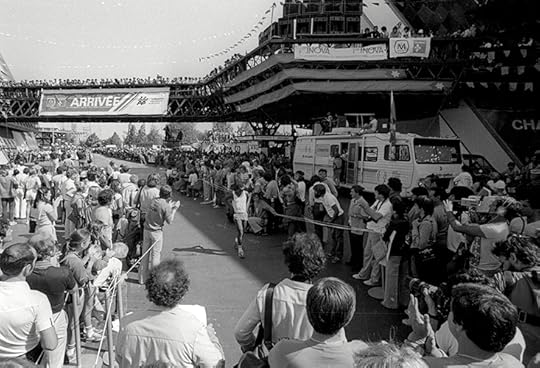
View Larger Image
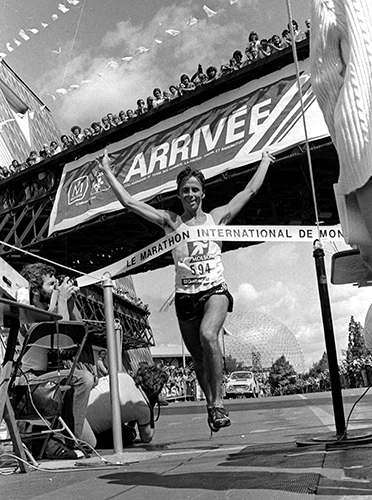
View Larger Image
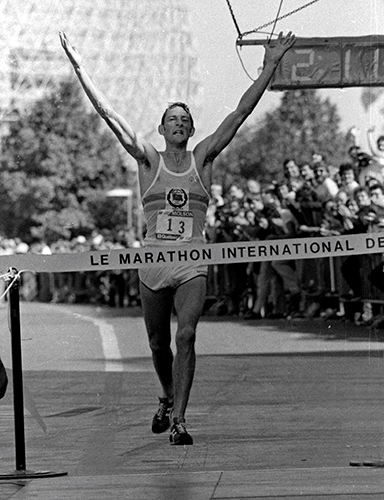
View Larger Image
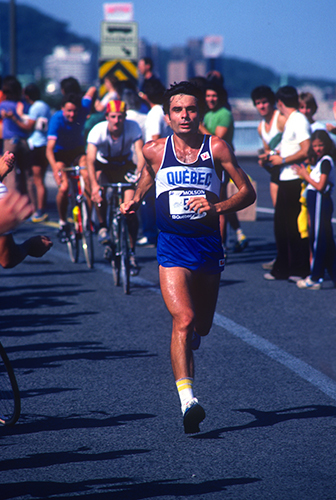
View Larger Image
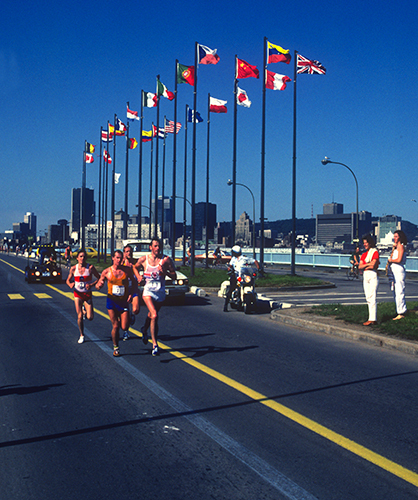
View Larger Image
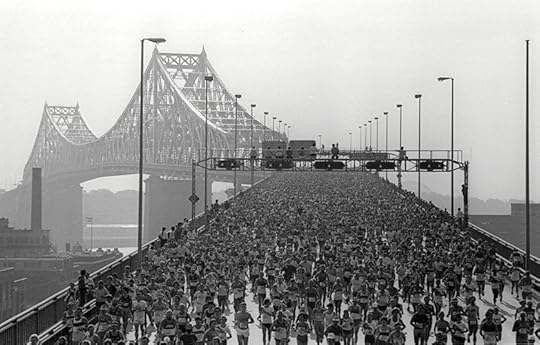
View Larger Image
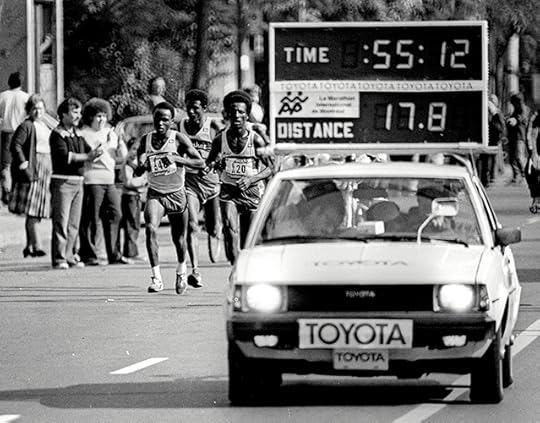
View Larger Image
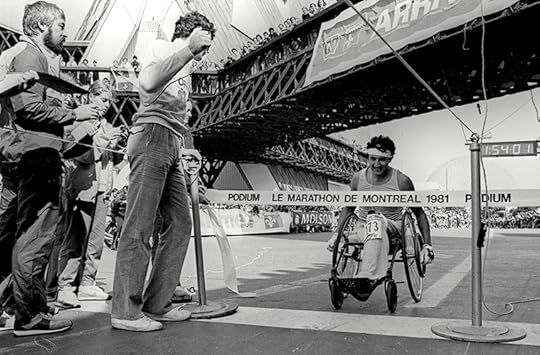
View Larger Image
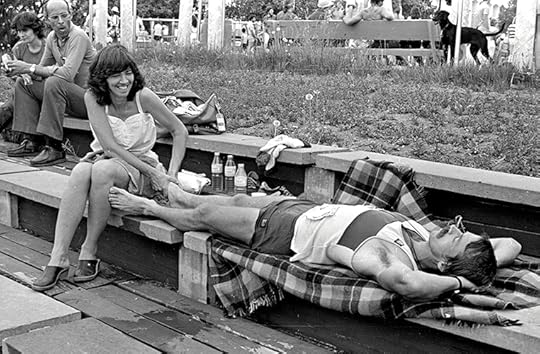
View Larger Image
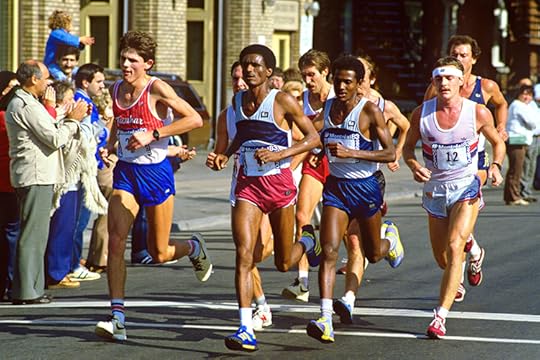
View Larger Image
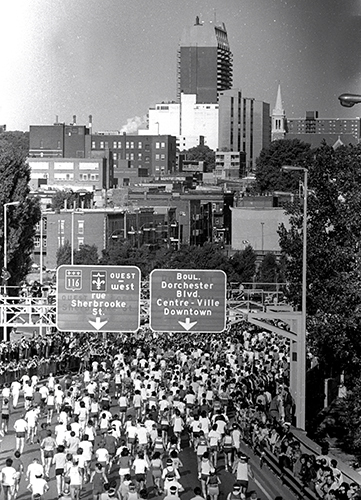
View Larger Image
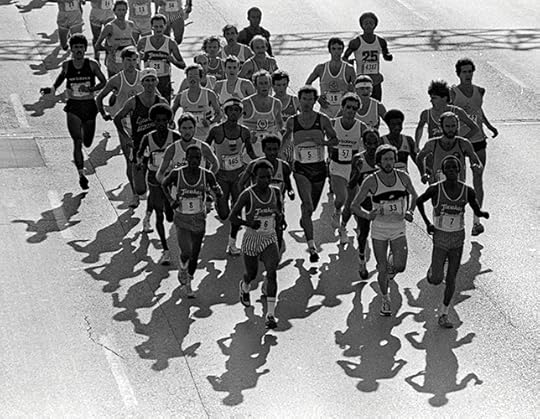
View Larger Image
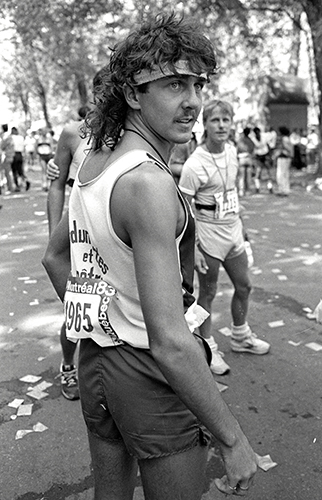
Related Galleries
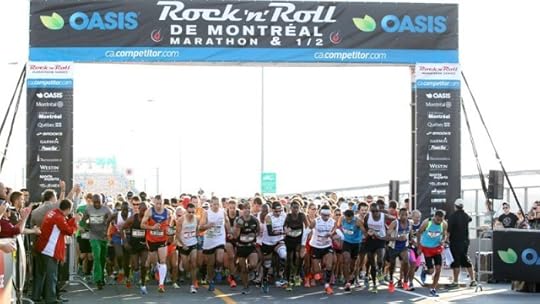
Bruce, Normand Win Rock ‘n’ Roll Oasis Montreal Marathon
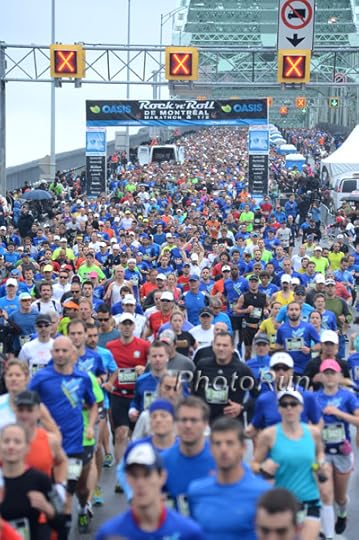
Photos: Rock ‘n’ Roll Montreal

More Galleries
The post Photos: Vintage Shots From Rock ‘n’ Roll Montreal appeared first on Competitor.com.
September 17, 2015
Strengthen Core Muscles with The Pedestal Routine
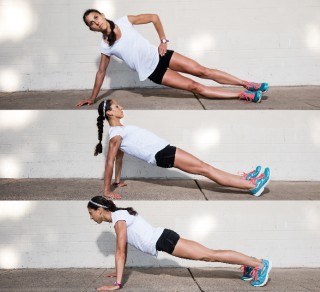
Photo: Scott Draper
The pedestal routine is a group of exercises that specifically targets your core muscles. While there are several variations of the routine—and varying levels of complexity—this abbreviated version focuses on three key positions.
“These are quick, all-encompassing exercises for someone short on time, but they hit all the main muscle groups,” says Dani Miller, a professional runner with the Hansons-Brooks Distance Project in Rochester, Mich.
How to do it:
Prone handstand: Get into a pushup position, maintaining a straight line from the top of your shoulders down to your feet. Focus on breathing to stay relaxed. Engage the core muscles by keeping the belly button tight.
Supine handstand: Balance on your heels and hands. Keep your body in a straight line and engage the core muscles.
“These engage all the core muscles and are similar to the tried-and-true plank,” Miller says of the handstands. “It is a staple in my core routine because it is quick, effective and can be done anywhere.”
Side pedestal: This resembles a side plank, with your body resting on the outside of one foot and the palm of one hand.
“Control your breathing and be aware of your linear body position,” advises Miller. “Have straight lines from the shoulders to the heels.”
Hold each position for one minute. Do 2–3 sets as part of your post-run stretching and strengthening routine.
RELATED: Strengthen Your Core With Abdominal Rollouts
The post Strengthen Core Muscles with The Pedestal Routine appeared first on Competitor.com.
6 Key Factors To Achieving Your Marathon Goal

Photo: Shutterstock.com
“Will I achieve my marathon goal?” If I had a dollar for every time I get asked this question, I’d be retired and living on my own private island!
As race day approaches, marathoners get antsy. They wonder and worry if they can hit their goal time. Having coaching thousands of marathoners, I’ve come up with a few critical, controllable factors that contribute to whether or not you will run well race day:
1. Stable Mileage
Look at your last 10-12 weeks of training. Was your weekly mileage consistent and stable? In other words, did you have large swings in weekly mileage or were your highest and lowest weeks within 10-25 percent of one another? If you averaged 45 miles per week but had several weeks at 20 miles and a few at 55, you had wide swings in mileage; if, however, you averaged 45 miles with a couple of “down” weeks at 35 miles and a couple of high weeks at 55, then your mileage was more stable.
I’ve found that athletes who were very consistent in their mileage across the last few weeks before the marathon have a certain amount of strength they can pull from in the later miles of the race.
2. Long Runs
In predicting marathon success, I’ve found that it’s not quite as simple as just getting in your long runs. I evaluate marathoners on two types of long runs—and not just that they complete them, but how they complete them.
First, if you built up to a 20-mile long run—common for faster marathoners—but were really fatigued and sore for 2-3 days afterward, that’s not a good sign. Successful marathoners are usually the ones that not only get in the long, steady runs but they’re the ones that recover well in the few days that follow.
Second, the marathoners who include 2-3 fast finish long runs in their programs—long runs where you really push it over the last few miles when you are physically and mentally tired—have a leg up on race day. It’s one thing to run for a long time but it’s an entirely different experience to run hard when tired—something a time goal-oriented marathoner will always face in the final few miles of the race.
3. Grooving Goal Pace
Hitting your goal race pace during training is one thing—running goal pace while being very relaxed mentally and physically is quite another ordeal. Marathoners who feel very comfortable and smooth while running goal pace workouts are race-ready. After all, running your goal pace continuously for hours—not minutes—so learning to run as easily as possible at race pace will ensure you’re fresher later in the race when fatigue sets in.
RELATED: Are You a Fast or A Slow Trainer?
4. Leg Durability
Early in a marathon training cycle, it’s very common for your legs to be sore after long runs or marathon-specific workouts. Later in the training cycle, however, successful marathoners notice that their legs feel stronger and don’t get sore anymore, even though their long runs are longer, their mileage is high and their other workouts are of higher quality. This is a very good sign for marathon day. Strong, fatigue-resistant legs won’t let you down on race day.
5. Fueling
Factor #5 is fueling, which is a black hole for many marathoners. There are no hard and fast methods to guarantee success, so it requires some trial and error to find what works for you.
Marathoners who have their nutrition dialed in (usually after some mishaps in training and lead up races) have a great chance at success on race day. You must have a robust fueling plan for race day where you get enough fuel to carry you through the entire race. Many marathoners fuel too little throughout the race and try to make it up as “the wall” nears—only to find that they can’t.
Whether you use a traditional fueling strategy (fast-acting sugars taken frequently) or an alternative fueling strategy (slower-acting carbohydrates or a fat-adapted, low carbohydrate/high fat diet), practice it beforehand in race conditions so you know how much to take across the race and how your gut will react when it is also working under duress in the later miles. It cannot be emphasized enough that nutrition plays a very big roll in success on marathon day.
RELATED: How To Bonk-Proof Your Running
6. Mental Toughness
Out of all the marathons I’ve run, the ones I’m most disappointed in are the ones where I had a pity party. I just lacked the mental toughness to deal with the high level of fatigue and mental challenges that the marathon brings. When looking at my athletes’ preparation, I try to remind them how they dealt with challenging runs over the course of their training cycle. Did they have a firm resolve? Or did they get easily overwhelmed when things didn’t go as planned or were harder than expected? Successful marathoners know how to deal with big mental challenges.
Prediction Time
If you’ve been keeping score, you probably passed the test on a few factors but didn’t quite hit the mark on others. What does this mean?
Obviously, if you hit all the factors, you are in great shape and well equipped to go after your goal. If you are lacking on 1-2 factors, you should still go for your goal, but know that you are going to have to bring your “A” game in the final 10K to power to the finish line.
Fail on 2-3 factors and you need to be very open to adjusting your goal on race day, or even beforehand. Don’t go out faster than your goal race pace and be very observant of how you are feeling. If you coast through 15-16 miles and feel good, stick to your plan; if, however, if you find that the first 10-13 miles feel harder than you would like and your body naturally wants to run 5-10 seconds slower per mile, you should slow down to that more comfortable pace. This is the only way to get to the finish line without totally falling apart.
There is nothing wrong with slowing down to ensure a positive marathon experience. You may not hit your goal time, but it’s a lot better than bonking and doing the dreaded survival walk/jog over the last few miles.
Finally, failing on 3 or more of the aforementioned factors means you must adjust your goal. Be smart, adjust to a slower goal pace (usually 5-15 seconds per mile slower than your planned goal pace) and set yourself up for a positive race experience. Shore up these missing factors before your next marathon so you can really nail your goal.
Over the years, this evaluation has served me—as a marathon coach and marathoner myself—very well. It has allowed me to better help marathoners set their goals and improve the likelihood of a positive experience.
****
About The Author:
Greg McMillan, M.S. provides training plans and online coaching for runners of all abilities through his website www.mcmillanrunning.com. Outside Magazine calls his McMillan Running Calculator the “Best Running Calculator” and his latest book, YOU (Only Faster), continues to receive rave reviews from runners and coaches.
The post 6 Key Factors To Achieving Your Marathon Goal appeared first on Competitor.com.
Are Salt Packets Useful for Runners?
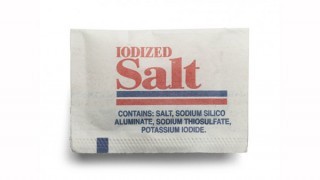
This article first appeared in Women’s Running.
NCAA runner turned high school coach Hillary Kigar has an answer for all things training!
Q: I’ve seen packets of salt handed out at races—but I’ve never used them in my training. How do I know if I need the extra sodium?
Most Americans get more than enough salt in their diet just from the foods we eat. However, as runners, we can be a little different than the average person. You might be experiencing a salt deficit if your shirt is soaked with sweat at the end of your run or you have white, salty residue on your skin.
Refueling with a sports drink, rather than a salt packet, is a good solution, as you will replenish your body with the liquid it needs as well as restore your sodium levels. For marathoners or ultrarunners, however, salt packets may be useful as the body is being stressed for extended hours before there is a chance to stop, refuel and recover. However, it’s still best to test out taking salt in training before you ever try it on race day!
The post Are Salt Packets Useful for Runners? appeared first on Competitor.com.
Trail of the Week: Rogue River Trail, Oregon
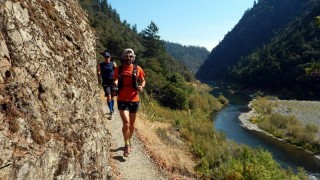
Photo: Nick Wilder
Our Trail of the Week feature is made possible through a partnership with Trail Run Project.
The Rogue River National Recreation Trail traverses the wild section of the Rogue National Wild and Scenic River for its entire glorious 40 miles in southwest Oregon. Majestic waterfalls, steep canyons, and glistening side-streams are just the beginning of this special place.
Although long-distance runners can do this in a day, it is most commonly backpacked over 3 to 5 days.Be prepared for everything: exposed sections can be brutally hot in the summer sun, but a cold day with drizzle will be especially cold in the deep forest. There is easy access to the river every few miles, and a swim might be just the ticket to keep you going on a hot day.
The first five miles are quite rocky due to lava flows that have been folded upright. The lava is about 140 million year old, and the Rogue River has been eating away at for the last 1 million. This section is exposed and can be hot.At 1.7 miles, you’ll pass Rainie Falls, one of the larger falls of the river. At mile 3.3, Rum Creek comes in on the south bank and Whisky Creek on the north. A quarter up Whisky Creek lies a miner’s cabin dating from 1880 and used until 1973.
The official Wild Rogue Wilderness begins at mile 24.4, and the next two miles are some of the most scenic. Take it slow and enjoy this section.
The aptly-named Inspiration Point is at mile 25.2, where the trail goes on a narrow ledge high above the cliff. The trail is both beautiful and exciting. You’ll run on a ledge carved out of the cliff high above the canyon—don’t make a misstep! This is another particularly hot and exposed section.
The final miles include one substantial hill, but as you roll into the parking lot you should have a huge smile on your face!
Along the river you may see deer and otters or even black bears looking for a meal of salmon. Bears, grown accustomed to easy pickings from boaters, may prove to be a nuisance in numerous campsites.
Birds abound, such as fish-eating osprey and great blue heron, and lizards hasten over the dry slopes above the water. Ticks and rattlesnakes are often encountered.
The Data
Miles: 37.8
Runnable: 97 percent
Singletrack: 100 percent
Average Grade: 3 percent
Max Grade: 18 percent
Total Ascent: 3,091 feet
Total Descent: -3,567 feet
Highest Elevation: 916 feet
For a closer look, check out the interactive map, data, photos and virtual run simulator courtesy of Trail Run Project:
The post Trail of the Week: Rogue River Trail, Oregon appeared first on Competitor.com.
Runner Finishes 3,000-Mile Cross-Country Run on U.S. Route 6
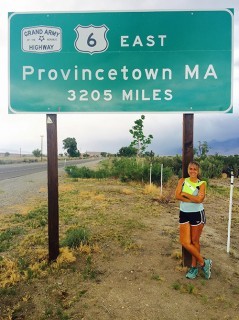
The current Route 6 is 3,205 miles long from Bishop, Calif., to Provincetown, Mass. However, Aprylle Gilbert ran the original route, prior to the change in 1964, which started in Long Beach, Calif., adding on an extra 447 miles. Photo: Courtesy of Aprylle Gilbert
In 4 months, 4 days, 6 hours and 50 minutes, 46-year-old Aprylle Gilbert completed her cross-country run along U.S. Route 6 from Long Beach, Calif., to Provincetown, Mass. She started her journey on May 11 at 9 a.m. and after crossing 12 different state lines, finished on Sept. 15 at 3:50 p.m.
According to the U.S. Route 6 Tourist Association, the organization that helped sponsor Gilbert’s across-the-country trek, this is the first time anyone has completed the 3,652-mile journey on foot—let alone run it, averaging about 30 to 45 miles per day.
What motivated Gilbert to run an ultramarathon everyday for 128 days? It was an entirely selfless motive to raise money for the Washington United Youth Center, a nonprofit that provides support to disadvantaged youth in Gilbert’s hometown, San Jose, Calif.
“I hope by doing this I’m setting an example that these kids are worth going the extra mile for,” Gilbert told Wareham Week. Through her own charity website on Crowdrise and contributions made to the U.S. Route 6 Tourist Association, she raised more than $10,000.
Gilbert started running in 2012 to help her get through a tough divorce. The mother of two and folk musician eventually discovered she had a natural ability to run long distances and the hobby stuck. The most she ever ran before attempting the ambitious cross-country challenge was a half marathon.
To prepare for the run, she gradually worked her long runs up to 50 miles and ran Mission Peak in Fremont, Calif., with 3,000 feet of elevation gain in 3 miles, weekly. Turns out all the hill work Gilbert incorporated into her training helped significantly with the most challenging parts of the route.
“The high desert and wind was the hardest,” Gilbert recalls. “A lot of people thought the Rocky Mountains were going to be hard, and they were, but Nevada has these finger-like mountains that stretch out, and I went through at least 10 mountain summits between the border of California and the border of Utah, between 6,000 to 8,000 feet.”
Originally, Gilbert had planned on finishing by the end of August, but several injuries along the way delayed her progress; from extensive foot blisters in Nevada to a staph infection that forced her to take 3 consecutive days off from running in Pennsylvania, and finally running the last 100 miles to Provincetown with plantar fasciitis.
With support from her friend Jose Reyes, who drove ahead in a Honda Civic stocked with camping gear, water and food supplies, and Mizuno Running, who donated larger sized running shoes when Gilbert’s size 9 shoes gave her blisters, Gilbert was able to battle and move past her physical injuries. However it was her mental grit that got her to the end eventually.
“At that point it was just basically my will and I didn’t want to fail. I didn’t want to have to say, ‘I didn’t accomplish what I set out to do.’ It was hard,” Gilbert says.
At the finish Gilbert’s daughters, Kayla, 22, and Mikenzie, 19, welcomed her arrival in Provincetown. Gilbert was also presented with the President’s Volunteer Service Award in recognition of her commitment to raise money for her local community.
The post Runner Finishes 3,000-Mile Cross-Country Run on U.S. Route 6 appeared first on Competitor.com.
Out There: Is Running Selfish?

Photo: Shutterstock.com
Runners spend hours training every week. Does that make them selfish?
In the last few years, I’ve witnessed a strange metamorphosis in my social circle: almost all my friends from college, the ones who used to streak naked down the street and subsist solely on pizza rolls and tall cans of Natty Ice, have transformed into responsible adults. They have stable jobs, wear sensible shoes, and drive Subarus. They have married, they have spawned, and their genetic material has created remarkable little humans.
Meanwhile, I’m typing this column while eating M&Ms for lunch. I may or may not be wearing pants. As for children? Pssht, please. I can barely keep myself alive.
Because we lead such different lives, my friends and I don’t always speak the same language these days. They say things like “mutual funds,” “carpool,” and “we don’t keep sweets in the house.” Where we really differ, though, is when they say they don’t have time to exercise. More specifically, that making the time to work out would be greedy.
“If you had kids, you’d understand,” one friend insisted as she bounced a toddler on her hip.
“Yeah, I’d love to disappear for an hour every day to go run, but it’s not about what I want, it’s about what they want,” added another, throwing a sidelong glance at the little people wrestling in the corner. “You have the luxury of being selfish, Susan. I don’t.”
It’s not the first time I’ve heard the “S” word in relation to endurance athletes. The individual commitment required to train for a race can be a huge bone of contention—spouses upset when Netflix marathons are replaced by actual marathons, friends incensed by a skipped happy hour in preparation for a Saturday long run, soccer parents befuddled as to why someone would sneak away for a run around the park instead of dutifully watching their kid practice. Almost every runner I know has been accused of being selfish at some point.
“Of course it’s selfish!” exclaimed Doug, an ultrarunner (and therefore, ultra-selfish?) friend of mine. “Training takes me away from my wife, friends, and other obligations, all so I can spend time outside by myself. I do it to escape the rest of my life, and to achieve personal goals. And after a long run or race, I’ll oftentimes crash on the couch for hours, adding even more uselessness to my day.”
“As much as I’d love to say that it isn’t, training is a selfish endeavor,” said Aixa, a mother of two and physician with a triathlon habit.
“It’s unquestionably self-centered,” added Amy, a marathon maniac with three kids.
The more I talked with fellow endurance athletes, the more the consensus grew: Yes, training is selfish. Yes, sometimes that selfishness inconveniences other people. Yes, that’s okay.
Wait, what? Isn’t selfishness supposed to be a character flaw?
“Everyone needs some ‘me’ time,” said Meghan, defending the time she spends training for races. “Most people wouldn’t call a 90-minute mani/pedi selfish.”
“I see it no differently than going to a therapist, or meditating in the morning, or a parent taking an extra-long poop because that is the only time or place he or she will be able to find peace and solitude,” Dan agreed.
Dawn said her training for races actually benefits her kids: “Everyone in the family gets to follow their passion. My kids are just about as passionate about their sports as I am about mine. I encourage them to follow their passion, and often that requires them to be selfish.”
Despite their admission that training was a selfish endeavor, almost every endurance athlete I spoke with said they – and those around them – were better for it. They believe the discipline, exercise, determination, pain, achievements, and—yes—selfishness that comes with training makes for a better person, spouse, parent, employee, friend, and all-around human being.
For too long, we’ve been taught that selfishness is a bad thing; that putting one’s own needs first is shameful; that “it’s not about what I want, it’s about what they want.” We throw ourselves headlong into making other people happy, to the detriment of our own well-being. We think selfishness as a luxury, a privilege waived in exchange for coexisting with others.
But how can we take care of others if we don’t take care of ourselves first? A little selfishness can go a long way.
So go ahead: Call the babysitter. Skip the happy hour drinks. Disappear for an hour before your spouse wakes up and hit your favorite trail. Sign up for that race. Give yourself permission to do what makes you happy, one mile at a time. Indulge in the luxury of being selfish.
Doing one good thing for you might just be the best thing to do for everyone else.
****
About The Author:
Susan Lacke does 5Ks, Ironman Triathlons and everything in between to justify her love for cupcakes (yes, she eats that many). Susan lives and trains in Salt Lake City, Utah with three animals: A labrador, a cattle dog, and a freakishly tall triathlete husband. She claims to be of sound mind, though this has yet to be substantiated by a medical expert. Follow her on Twitter: @SusanLacke.
The post Out There: Is Running Selfish? appeared first on Competitor.com.
Ryan Hall's Blog
- Ryan Hall's profile
- 21 followers



